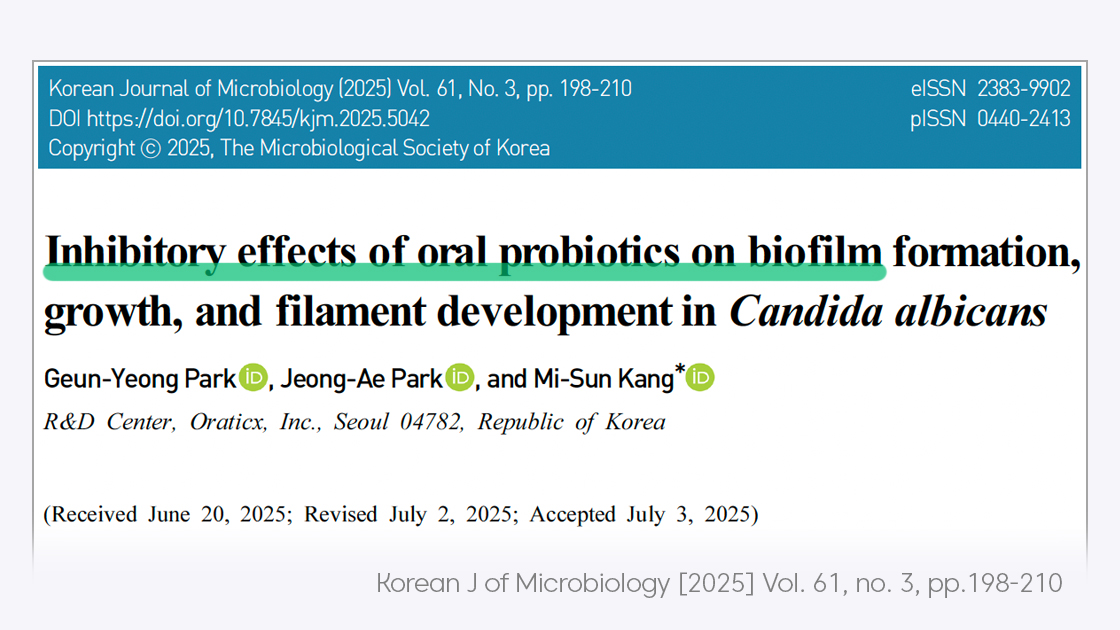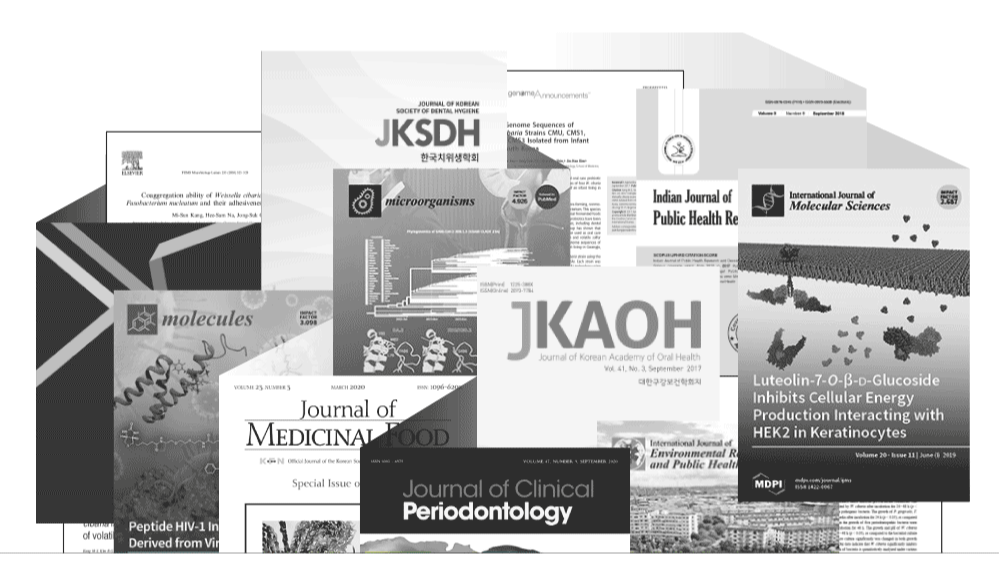Research Paper no.39
Ready to unleash the power of probiotics?
Revolutionize your oral care routine with Oraticx probiotics!
Inhibitory effects of oral probiotics on biofilm formation, growth, and filament development in Candida albicans
Authors: Geun-Yeong Park, Jeong-Ae Park, and Mi-Sun Kang
Journal: Korean Journal of Microbiology
Volume: 61, No. 3, pp. 198–210
Abstract
Candida albicans is a major opportunistic fungal pathogen causing oral candidiasis, with biofilm formation and hyphal transition being critical virulence factors. While the oral probiotics Weissella cibaria strains CMU (OraCMU®) and CMS1 (OraCMS1®) have shown antibacterial effects against oral pathogens, their antifungal potential remains largely unexplored.

This study evaluated the antifungal effects of OraCMU and OraCMS1 on C. albicans. We investigated the effects of cell-free supernatants (CFSs) and live cells of both strains on the growth, biofilm formation, and hyphal transition of C. albicans through microbiological assays and microscopy. We also assessed the synergistic antifungal effects of CFSs and black raspberry extract. Expression levels of biofilm-associated genes (BCR1, EFG1, NRG1, and UME6) were analyzed using quantitative real-time polymerase chain reaction.
OraCMU and OraCMS1 significantly inhibited C. albicans growth and biofilm formation in a dose-dependent manner. OraCMU CFS combined with black raspberry extract exhibited a synergistic antifungal effect. Live probiotic cells demonstrated stronger inhibitory activity than other commercial oral probiotics. Both CFSs markedly suppressed filamentation under hyphal-inducing conditions. Key biofilm-related gene expression levels were significantly downregulated. These findings suggest that OraCMU and OraCMS1, and their metabolites, show strong potential as alternatives or adjuncts for managing oral candidiasis by disrupting biofilm formation, inhibiting hyphal transition, and modulating virulence-related gene expression in C. albicans.

25+ Years of Research and Innovation
OraTicx has over 25 years of experience in research, with more than 36 published studies on our unique bacterial strains.








